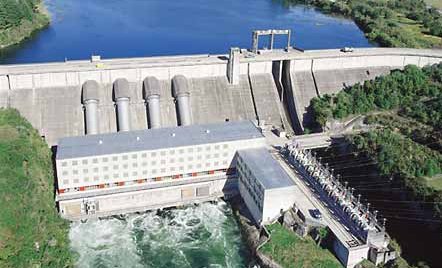 |
|
|
 |
 |
| Department of Energy Technology Engineering |
 |
 |
 |
|
 |
| Economic Analysis and Entrepreneurship |
| Course Code: |
7303C |
| Course Type: |
Theory |
| Course Category: |
Core Module |
| Hours per Week: |
3 |
| Credit Units: |
4 |
| Semester: |
G |
Aims and Scope
The aim of the module is the mathematical modeling of
the main issues concerning the economic activity of the citizen and the
productive enterprises and, also, the use of the linear programming to make
optimum decisions with respect to relevant problems.
Student will
know about, the principles of time value of money and the forms
of capital assets, the methods of depreciation and their
calculation, the economic dimensions of equipment replacement
issues, the main cost factors determining the function of
an energy system, the general relations of calculation of the rate
of return on investment, the methods of comparison of investment plans
concerning technical systems, the linear programming method for problems under technical
limitations demanding an optimum economic solution.
Course Description
Introductory concepts. Time value of money,
calculation of interest, present and future value. Elements
of capital, balance sheet and income statement, fixed
and variable costs. Depreciation, methods of computing depreciation
(straight
line, declining
balance methods, fixed percentage). Rate
of return on investment, general equation. Return
on investment using owner’s equity and borrowing money. Equipment replacement : replacement by a
similar machine, replacement by an improved machine, useful life of equipment, technological improvement. Impact of operation and maintenance expenditures on the rate
of return on investment. Criteria of investment evaluation, investment
efficiency index, payback period, net present value, internal rate of return.
Investment choices using the present value criterion, examples. Principles of modeling of economic systems, optimization
of economic function of systems. Linear programming – examples.
Expected Course Outcome
After completing this course, students should be able
to:
- To understand and to solve simple economic problems with respect to time value of money, the present and future value of amount of money.
- To use the methods of economic evaluation of
investment plans in their assignment.
- To calculate the internal rate of return of an
investment and to compare alternative investment plans.
- To allocate the limited resources of an enterprise most effectively through their knowledge of linear
programming.
- To understand the algorithms of problem solving
to face.
- To implement the
executable algorithms using
Matlab.
Bibliography
Greek:
- Chacholiades, M, 1990, Mικροοικονομική ΙΙ, Εκδόσεις Κριτική, Αθήνα.
- Αρτίκης, Α. "Χρηματοοικονομική διοίκηση-απόφαση επενδύσεων". Σταμούλης,1999.
- Βρανάς, Α. "Ανάλυση Χρηματοοικονομικών Καταστάσεων και Στοιχείων Επιχειρηματικής Δραστηριότητας"’, Ελληνική Εταιρία Επιχειρησιακών Ερευνών, Αθήνα 1992.
- Θεοφανίδης, Σ., 1987, Εγχειρίδιο Αξιολόγησης Επενδυτικών Σχεδίων. Αθήνα: Παπαζήσης.
- Μέργος, Γ. Ι., 2003, Κοινωνικο-οικονομική Αξιολόγηση Επενδύσεων και Πολιτικών. Μπένος: Αθήνα.
- Σίσκος, Γ. Γραμμικός Προγραμματισμός, Αθήνα: Εκδόσεις Νέων Τεχνολογιών, 2002.
- Τσακλάγκανος, Α., Χρηματοδότηση κα Αξιολόγηση Επενδύσεων, Θεσσαλονίκη, 1985.
- Τσιαντής, Κ. και Α. Καζάνας – Εργαστηριακές Ασκήσεις Οικονομικής Ανάλυσης με χρήση του Matlab – Σημειώσεις Εργαστηρίου – 2007.
- Τσιαντής, Κ. – Οικονομική Ανάλυση – Σημειώσεις Θεωρίας - 2007.
- Υψηλάντης, Π. Γ. Επιχειρησιακή Έρευνα, 2η έκδ. , Αθήνα: Έλλην, 2007,
- Φωκάς-Κοσμητάτος, "Επιχειρησιακή Έρευνα", Εθνικό Μετσόβιο Πολυτεχνείο, Σχολή Μηχανολόγων – Ηλεκτρολόγων, 1971.
- Φράγκος, Χ., Οικονομικά Μαθηματικά, 2η έκδοση, Αθήνα: Σταμούλης, 2007.
English:
- Brigham,
E.F. and Houston, J. F. (2004). Fundamentals of Financial Management (Concise
4th ed.). Mason OH: South-Western College Publishers.
- European
Commission (1997). Financial and Economic Analysis of Development Projects.
(Manual-Methods and Instruments for Project Cycle Management). European
Commission: Luxemburg.
- Van
Horne, J.C. (2005). Financial Management and Policy, (5thEd.), Englewood
Cliffs, N. J. Prentice Hall.
- Ferguson,
Ken (2002). Essential Economics: A Guide
for Business Students, Palgrave Macmillan Limited.
- Lumby
,S., and Jones, C. (2001). Fundamentals of Investment Appraisal. Thomson Learning, London.
- Nicholson,
W. (1998). Microeconomic Theory: Basic Principles and Extensions. New
York:The Dryden Press.
- Perloff,
J. M. (1999). Microeconomics. New York: Addison- Wesley .
- Pindyck,
R. S. and D. L. Rubinfeld (1998). Microeconomics. New Jersey:
Prentice-Hall.
- Varian,
H. (1992). Microeconomic Analysis. Norton: New York.
|
| Created Date : 23/05/2013 |
|
|
|
| |
|
|
|
|
|
|
 |